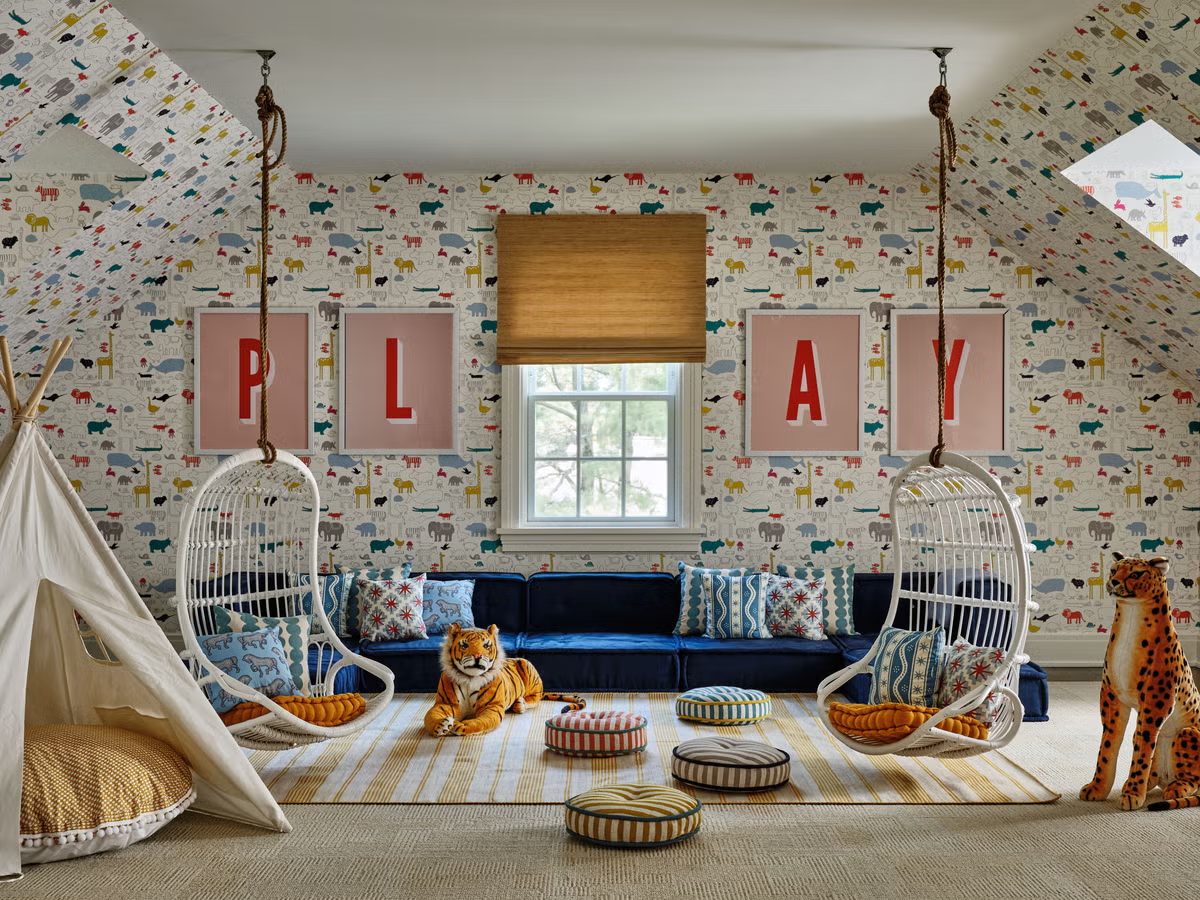Creating a dedicated playroom for boys can be a transformative endeavor that fosters imagination, cognitive development, and unbridled joy. In today’s fast-paced digital world, having a tangible space where young minds can flourish through hands-on activities and experiential learning is more paramount than ever.
The quintessential boy’s playroom transcends the conventional boundaries of mere entertainment, serving as a sanctum where creativity intertwines with physical activity and social interaction.
When designing a playroom for boys, it’s essential to strike the perfect balance between functionality and fun, while ensuring the space grows with your child.
Boy Playroom Ideas
Whether you’re working with a small nook or an entire basement, these ten innovative ideas will help you craft a space that not only captures your boy’s current interests but also adapts to his evolving needs and preferences.
1. Adventure Sports Climbing Wall
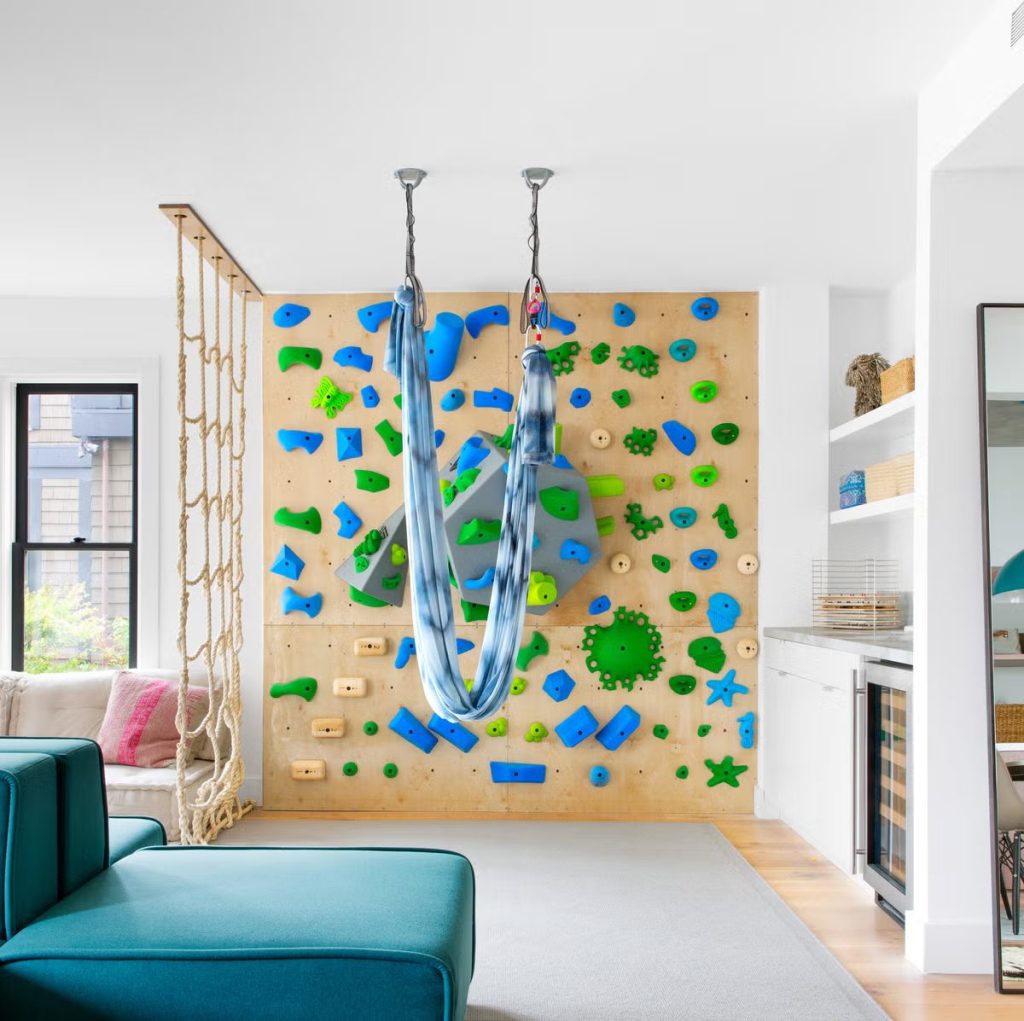
Transform an ordinary wall into an exciting climbing adventure that challenges both body and mind. A climbing wall installation can range from simple stepping holds to complex routes that simulate real rock climbing experiences. This feature not only promotes physical activity but also helps develop problem-solving skills and spatial awareness.
The beauty of a climbing wall lies in its versatility. You can customize the routes regularly by repositioning the holds, creating new challenges that keep children engaged. Consider adding crash pads below and installing the wall at a slight angle to enhance safety while maintaining the excitement factor.
2. Gaming and Tech Corner
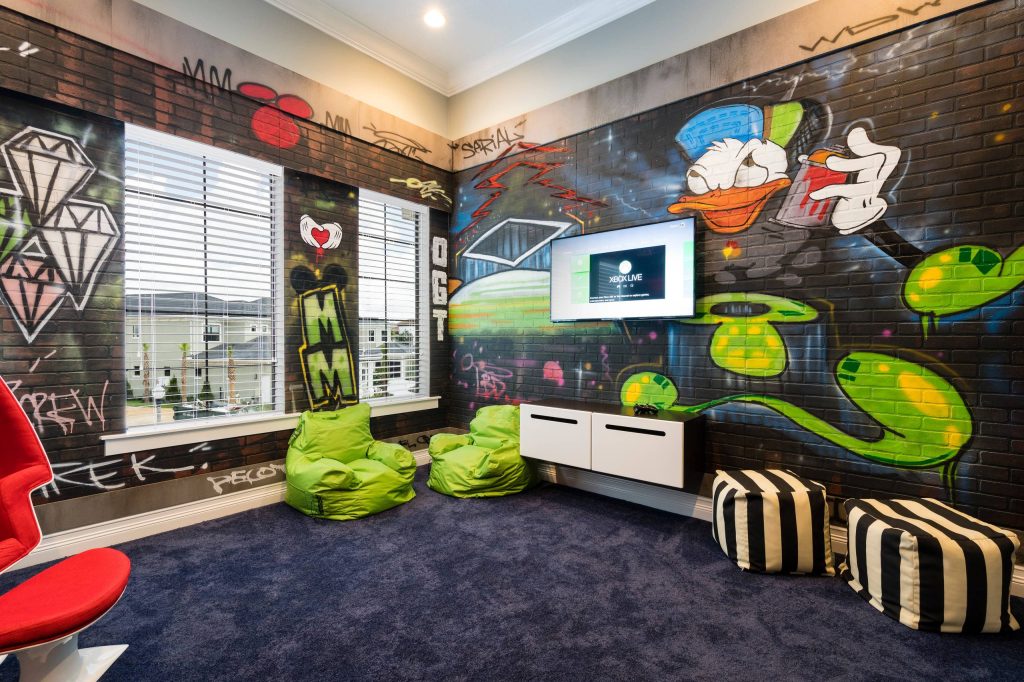
Create a dedicated space for gaming that combines both modern technology and classic entertainment. Set up a comfortable seating area with gaming consoles, a modest-sized TV, and perhaps even a retro arcade machine to introduce your boy to different gaming eras.
Balance the digital experience by incorporating a board game collection and a table for traditional gaming sessions. This combination teaches children to appreciate both modern and classic forms of entertainment while promoting social interaction when friends visit.
3. Science Laboratory Station
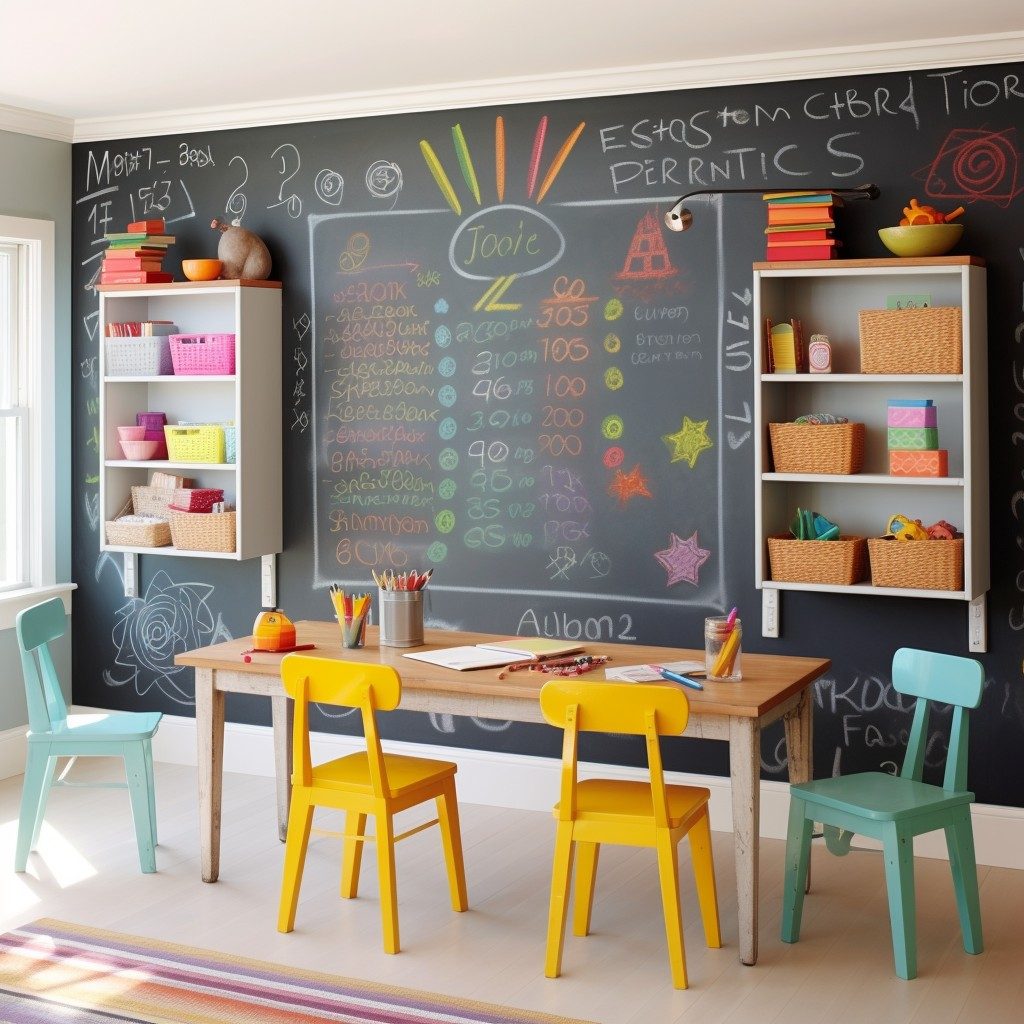
Design a fascinating mini laboratory where curious minds can explore the wonders of science. Include a sturdy workbench equipped with microscopes, magnifying glasses, and safe experimental kits. Add educational posters about space, chemistry, and biology to create an immersive learning environment.
Storage solutions like labeled containers and shelving units keep scientific equipment organized and accessible. Consider installing a small sink if possible, making it convenient to conduct water-based experiments and clean up afterward.
4. Sports Equipment Display and Storage
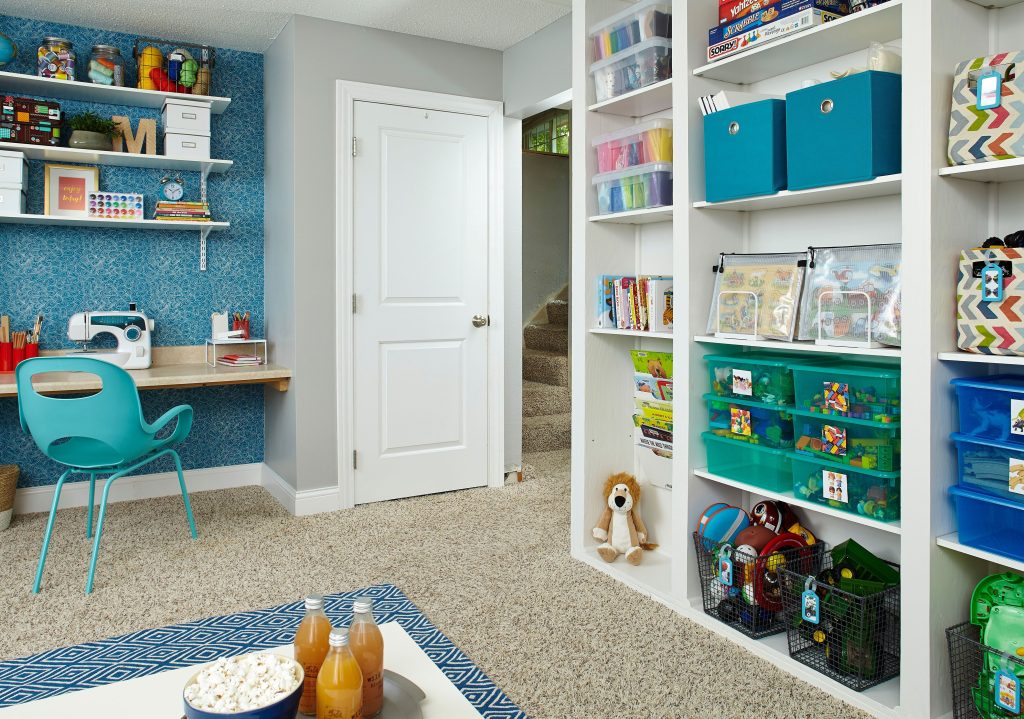
Create an organized sports corner that showcases equipment while keeping it readily accessible. Install open shelving and hooks to display balls, bats, helmets, and other sports gear. This setup not only keeps the room tidy but also encourages regular physical activity.
Include a rotation system for seasonal sports equipment and add a mirror wall section where boys can practice their techniques and form. This space can double as a mini practice area for various sports skills.
5. Building and Construction Zone
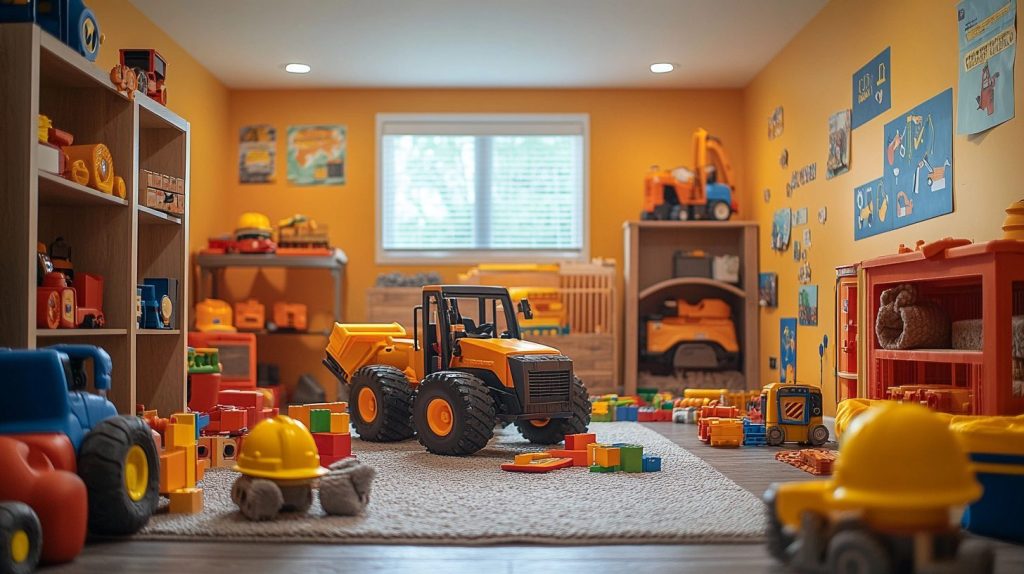
Designate an area specifically for construction toys and building activities. Install a large table with storage drawers underneath for LEGO sets, building blocks, and construction toys. The surface should be durable enough to withstand constant play and creative experiments.
Complement the space with wall-mounted storage solutions and clear containers to organize different building materials by type, size, or color. Add a display shelf for completed projects, encouraging pride in achievement and inspiring new creations.
Related Guide: 12 Creative Playroom Ideas
6. Art and Crafts Station
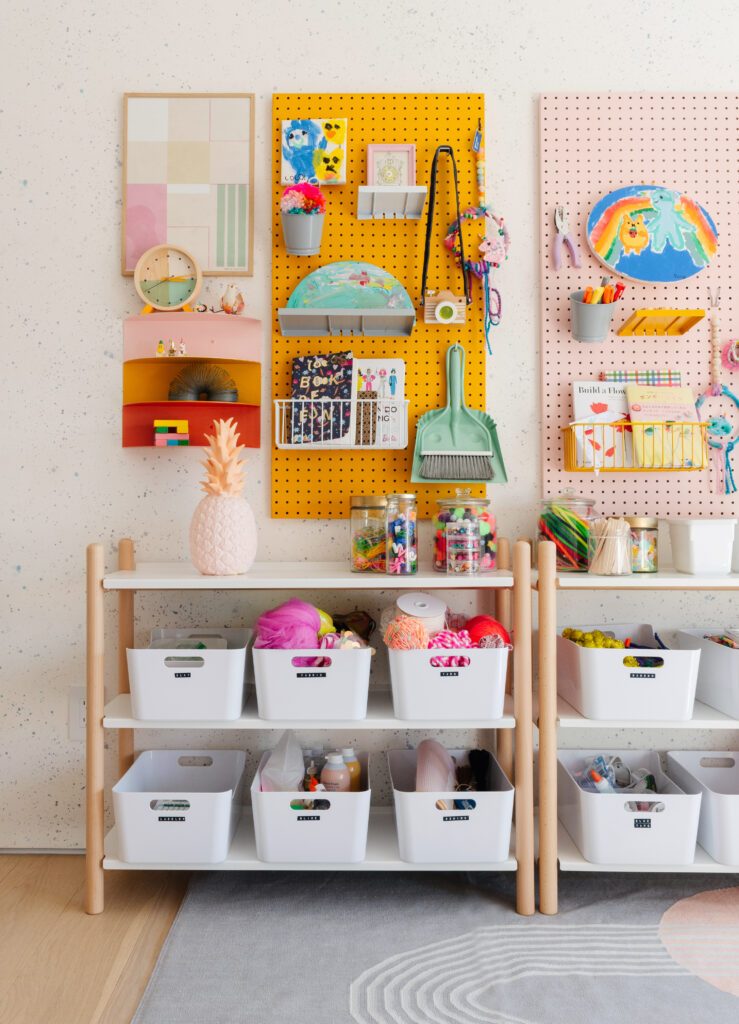
Set up an inspiring creative corner where artistic expression can flourish. Include an adjustable-height table, comfortable seating, and ample storage for art supplies. Good lighting is crucial, so consider installing task lighting or positioning this area near natural light sources.
Organization is key in this zone. Install vertical storage solutions, pegboards for tools, and clear containers for supplies. Include an easy-clean floor mat and washable wall covering to make cleanup hassle-free after messy art sessions.
7. Reading Nook and Study Space
Design a cozy corner that encourages reading and learning. Create a comfortable seating area with floor cushions, bean bags, or a hanging chair. Add soft lighting and bookshelves at accessible heights to make reading materials easily reachable.
Incorporate a small desk or study area adjacent to the reading nook, making homework time more appealing. Use noise-reducing elements like carpet or wall padding to create a quiet atmosphere conducive to concentration.
8. Musical Performance Stage
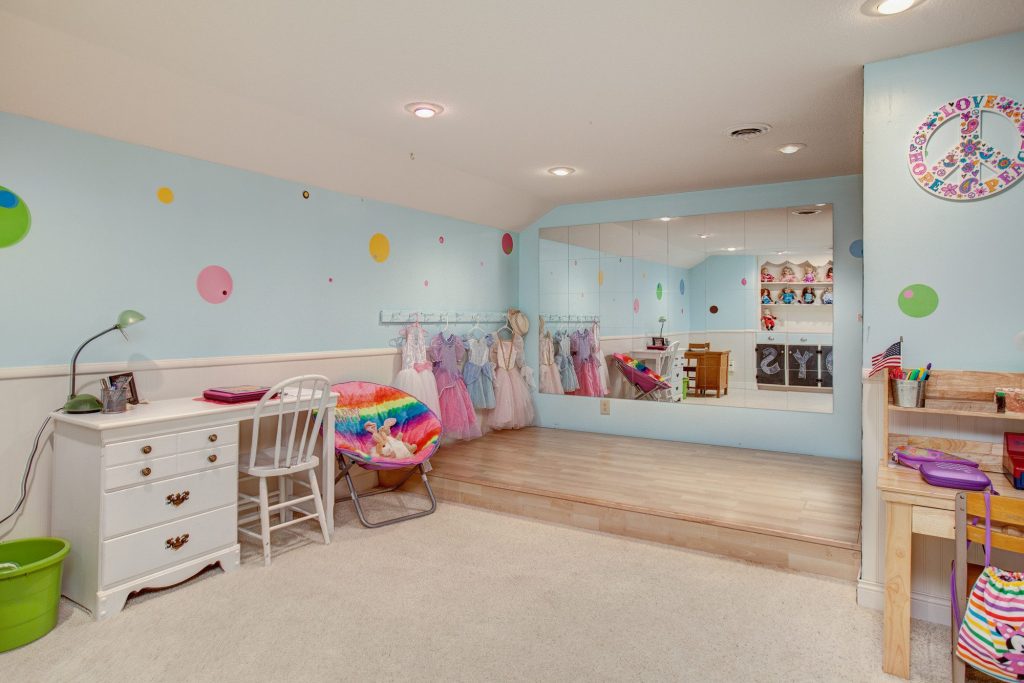
Construct a small performance area where budding musicians can express themselves. Include a raised platform or designated floor space with musical instruments, microphones, and perhaps even simple lighting effects. This space encourages performance confidence and creative expression.
Add storage solutions for instruments and audio equipment, and consider incorporating sound-dampening materials on walls to manage noise levels. This area can also serve as a puppet theater or presentation space.
9. Adventure Theme Fort
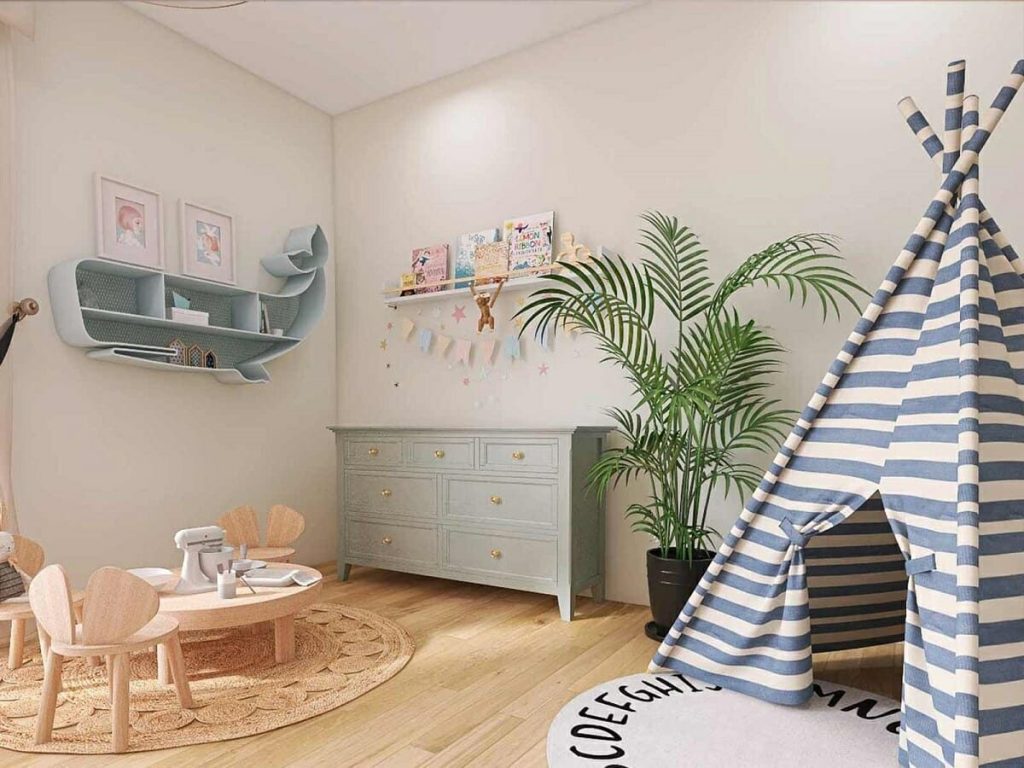
Build a versatile play structure that can transform into different scenarios. Whether it’s a castle, spaceship, or treehouse, include elements like climbing nets, slides, and hidden compartments. This structure becomes the centerpiece of imaginative play.
Make the fort adaptable with changeable themed elements and ensure it’s sturdy enough for active play. Include storage space within the structure for props and costume elements that enhance role-playing scenarios.
10. Storage and Organization Hub

Create an efficient organization system that makes cleanup fun and teaches responsibility. Use color-coded bins, labeled containers, and accessible shelving units. Make organization intuitive by categorizing toys and activities by type or frequency of use.
Implement a rotation system for toys and activities to prevent overwhelming the space and maintain interest. Include child-height hooks and storage solutions to promote independence in maintaining the room’s organization.
Conclusion
Creating the perfect boy’s playroom is an investment in your child’s development, creativity, and happiness. These ten ideas offer a comprehensive approach to designing a space that balances fun with functionality, learning with leisure, and independence with safety.
Remember that the best playroom is one that reflects your child’s unique interests while providing room for growth and adaptation.
By incorporating these elements thoughtfully, you’ll create a space that not only entertains but also nurtures your boy’s development through various stages of childhood. The key is to maintain flexibility in the design, allowing the room to evolve as your child’s interests and needs change over time.

